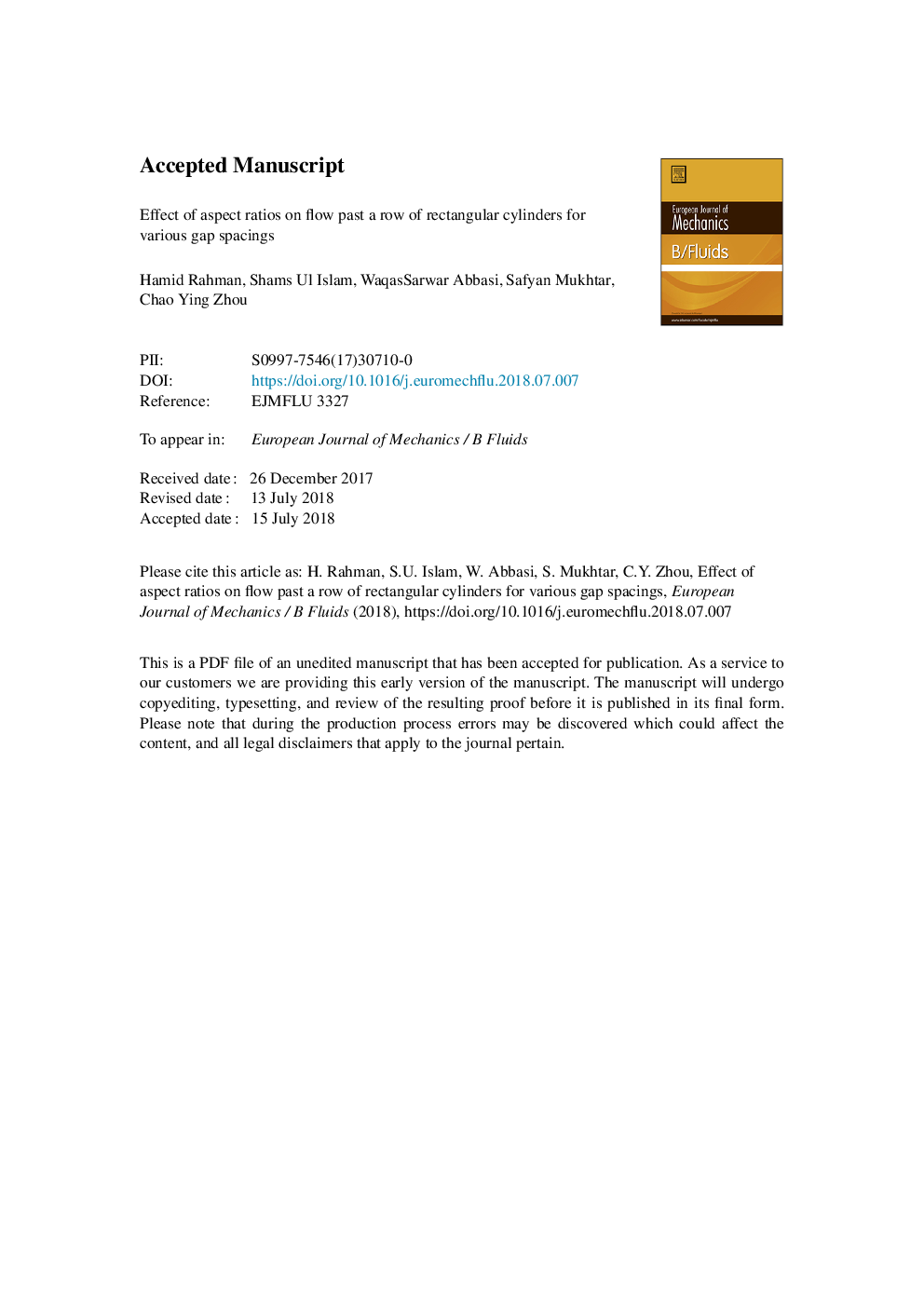| Article ID | Journal | Published Year | Pages | File Type |
|---|---|---|---|---|
| 7050816 | European Journal of Mechanics - B/Fluids | 2018 | 27 Pages |
Abstract
Numerical simulations are carried out to study the effect of aspect ratio (AR) and gap spacing (g) for flow past a row of rectangular cylinders using lattice Boltzmann method (LBM). The Reynolds number (Re) is fixed at 150, gap spacing is taken in the range from 0.25 to 4 while the aspect ratio varies from 0.5 to 2. Depending on AR and g, the flow is classified in to three major classes; (i) modulated (ii) symmetric and (iii) synchronized. In each class different flow patterns are observed. In modulated class, the flow behind cylinders shows merging and distortion while the force coefficients are modulated. The observed flow patterns for this class are:nearly-bistable, deflected, flip-flopping and chaotic. The flow behind middle cylinder in symmetric class is either steady or nearly steady. In this class symmetric and nearly-symmetric flow patterns are observed. In synchronized class, the flow behind each cylinder is fully developed with alternate negative and positive vortices. The flow pattern observed for this class are: quasi-synchronized, synchronized and non-synchronized. Fluid forces acting on each cylinder, flow structure mechanism, time signal analysis of drag and lift coefficients and vortex shedding frequencies are investigated systematically for different AR and g. The results show that at small g and AR, flow is complex and is more affected by AR as compared to g. At large g and AR the flow is synchronized throughout the computational domain. The results further show that the mean drag coefficients of all cylinders increase with corresponding decrease in g for fixed AR. While at fixed values of g the mean drag coefficients show variation for all AR. At large g and fixed AR the mean drag coefficient of all cylinders approaches to single cylinder and all cylinders experience same drag. It has been observed that the smaller spacing values have more influence on Strouhal number as compared to higher spacing values.
Keywords
Related Topics
Physical Sciences and Engineering
Chemical Engineering
Fluid Flow and Transfer Processes
Authors
Hamid Rahman, Shams Ul Islam, Waqas Sarwar Abbasi, Safyan Mukhtar, Chao Ying Zhou,
